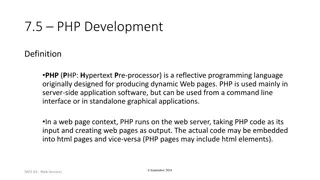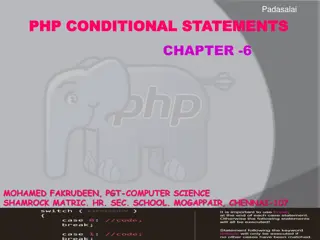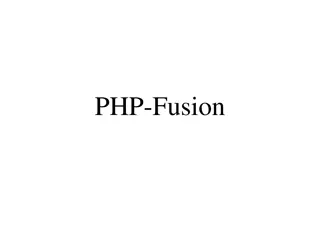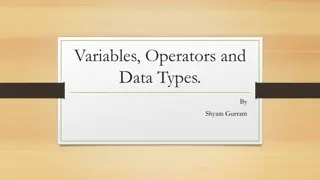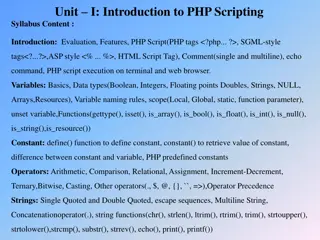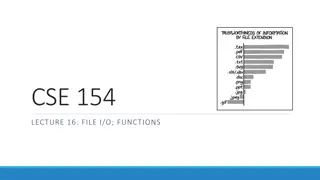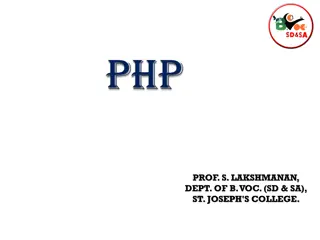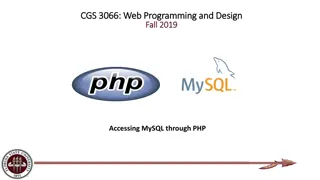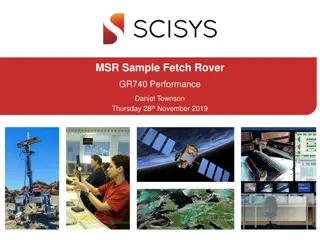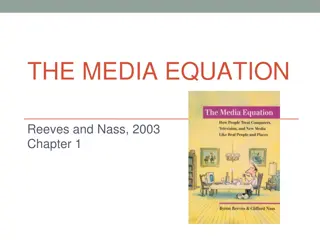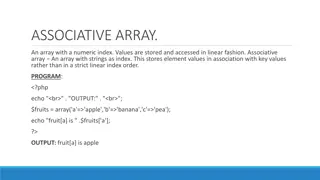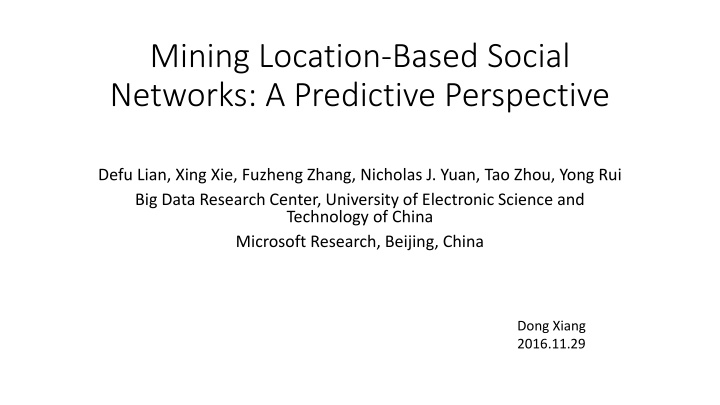
Predictive Analysis in Location-Based Social Networks
Explore the predictive perspective of mining location-based social networks, focusing on predicting user check-in locations with high probability. This study delves into spatial and temporal analyses, uncovering patterns in user behaviors and preferences. Discover the significance of this research in urban planning, traffic forecasting, advertising, and commercial analysis.
Download Presentation

Please find below an Image/Link to download the presentation.
The content on the website is provided AS IS for your information and personal use only. It may not be sold, licensed, or shared on other websites without obtaining consent from the author. If you encounter any issues during the download, it is possible that the publisher has removed the file from their server.
You are allowed to download the files provided on this website for personal or commercial use, subject to the condition that they are used lawfully. All files are the property of their respective owners.
The content on the website is provided AS IS for your information and personal use only. It may not be sold, licensed, or shared on other websites without obtaining consent from the author.
E N D
Presentation Transcript
Mining Location-Based Social Networks: A Predictive Perspective Defu Lian, Xing Xie, Fuzheng Zhang, Nicholas J. Yuan, Tao Zhou, Yong Rui Big Data Research Center, University of Electronic Science and Technology of China Microsoft Research, Beijing, China Dong Xiang 2016.11.29
Background (1) The increased scale of location information
Background (2) The development of location-based social network Gowalla Foursquare Wechat
Significance 1. Unban Planning 2. Traffic forecasting 3. Advertising 4. Commercial Analysis
Problem Definition Mining the location where the user check-in, predict the location he/she will arrive with high probability A typical scenario for next check-in location prediction
Problem Analysis 1. Spatial Analysis 2. Temporal Analysis
Spatial Analysis Finding the distance distribution between consecutive mobility records given regular and irregular (novel) mobility behaviors coexisted. 1) most check-ins (over 80%) are within 10 kilometers from the immediately preceding locations. 2) when we already know that users have checked in at regular locations, the next regular location is significantly nearer to them than next novel location. 3) users are more willing to explore continuously. This means that when a user has visited a new attraction, she may also try a nearby restaurant.
Temporal Analysis 1) returning probability is characterized by peaks of each day, capturing a strong tendency to daily revisit regular locations 2) It confirms the existence of temporal regularity, which is thus necessarily introduced into the prediction model
Temporal Analysis 1) when a user has visited a regular location, she is less inclined for exploration soon after 2)users will be more likely to visit novel neighboring locations consecutively within a short interval
Problem Solving 1. Regularity Mining for Regular Mobility Prediction 2. Location Recommendation for Irregular Mobility Prediction 3. Mining Propensity of Novelty Seeking 4. A Novelty-Seeking Driven Framework for General Mobility Prediction
1. Regularity Mining for Regular Mobility Prediction (1) Markov-based Predictors Learning the Markov model mainly depends on the estimation of location transition (due to the small amount of personal data, only first-order Markov models are taken into account) Particularly, in most mobility datasets from LBSNs, the number of parameters in the Markov estimator is around 40 40 since there are 40 POIs for each user on average, while there are only about 60 training instances (mobility records) on average. Laplace smoothing techniques or Kneser-Ney smoothing techniques
1. Regularity Mining for Regular Mobility Prediction (2) Temporal Regularity In temporal regularity, the conditional probability P(l|d, h) must be estimated accurately, where d is the day of week and h is the hour of day. Assuming the conditional independence d and h given location l 6 pm. Or centered 6 p.m? => Gaussian kernel smoothing function
1. Regularity Mining for Regular Mobility Prediction (3) Hidden Markov Model Temporal regularity and Markov model can be integrated in a unified Hidden Markov Model, where locations are considered as hidden states and the temporal information is considered as the observations of Hidden Markov Model. Supervised learning to estimate the parameters corresponds to the above estimation process Use Maximum Likelihood Estimate for the initial state probability
2. Location Recommendation for Irregular Mobility Prediction Method 1. User Preference Learning 2. Geographical Constraint 3. Social Influence 4. Hybrid Recommendation
1. User Preference Learning (1)User-based collaborative filtering ru {0, 1}N User u represents as , N means N locations in total ||A||=( aij^2)^(1/2) Similarity calculation formula: (2)Use Matrix factorization as dimension reduction
2. Geographical Constraint The geographical information of location requires physical interactions, near things are more related than distant things (1) Kernel density estimation infers the probability a user will show up around location lj (2)Learning-based geographical inference seamlessly integrating geographical modeling with matrix factorization based user preference learning
2. Geographical Constraint Graph Laplacian regularization: is more often exploited for capturing social influence for the sake of seamless integration with matrix factorization based preference learning, although social-based filtering tends to be more intuitive. Given all users symmetric similarities S based on social network ties, such as the ratio of common friends, this regularizer can be defined as follows:
3. Social Influence Similar to user-based collaborative filtering, except it captures user commonality based on social network information where Fi and Flrepresent the friend sets of user uiand ul, respectively
3. Social Influence Graph Laplacian regularization: is more often exploited for capturing social influence for the sake of seamless integration with matrix factorization based preference learning, although social-based filtering tends to be more intuitive. Given all users symmetric similarities S based on social network ties, such as the ratio of common friends, this regularizer can be defined as follows:
3. Mining Propensity of Novelty Seeking (1) Exploration Prediction It determines whether people will seek novel (irregular) locations next. Given mobility data, whether a visit to a location is regular or not can be determined by searching the mobility history of the user. If the visit location has already been visited earlier, the visit is considered as regular; otherwise, it is irregular. Exploration Prediction is a binary classification problem. Features Building: Historical features, Temporal features, Spatial features
3. Mining Propensity of Novelty Seeking (2) Mobility Indigenization classifying people as native and non-natives indigenization coefficients: individual behavioral Index & collaborative behavioral index counts the ratio of repeated mobility records in a city ND for different location NT for all the location record average normalized popularity of a user s visit locations, native is less likely to visit popular locations than a non-native These two indigenization coefficients can be used to define an integrated coefficient Parameters are learned by LR
3. Mining Propensity of Novelty Seeking (3) Irregularity Detection further distinguishes several levels of propensity of novelty seeking, and detects the level of novelty seeking by measuring the popularity of the visit locations and the transition frequency to visiting location with respect to individual mobility history before the visit time.
4. A Novelty-Seeking Driven Framework for General Mobility Prediction Provided the probabilistic output of the regularity mining algorithm Pr(l) (r indicates regular) and recommendation algorithm Pn(l) (n indicates novel), we exploit novelty seeking to combine them based on the probability of exploration Pr(Explore) as follows:




